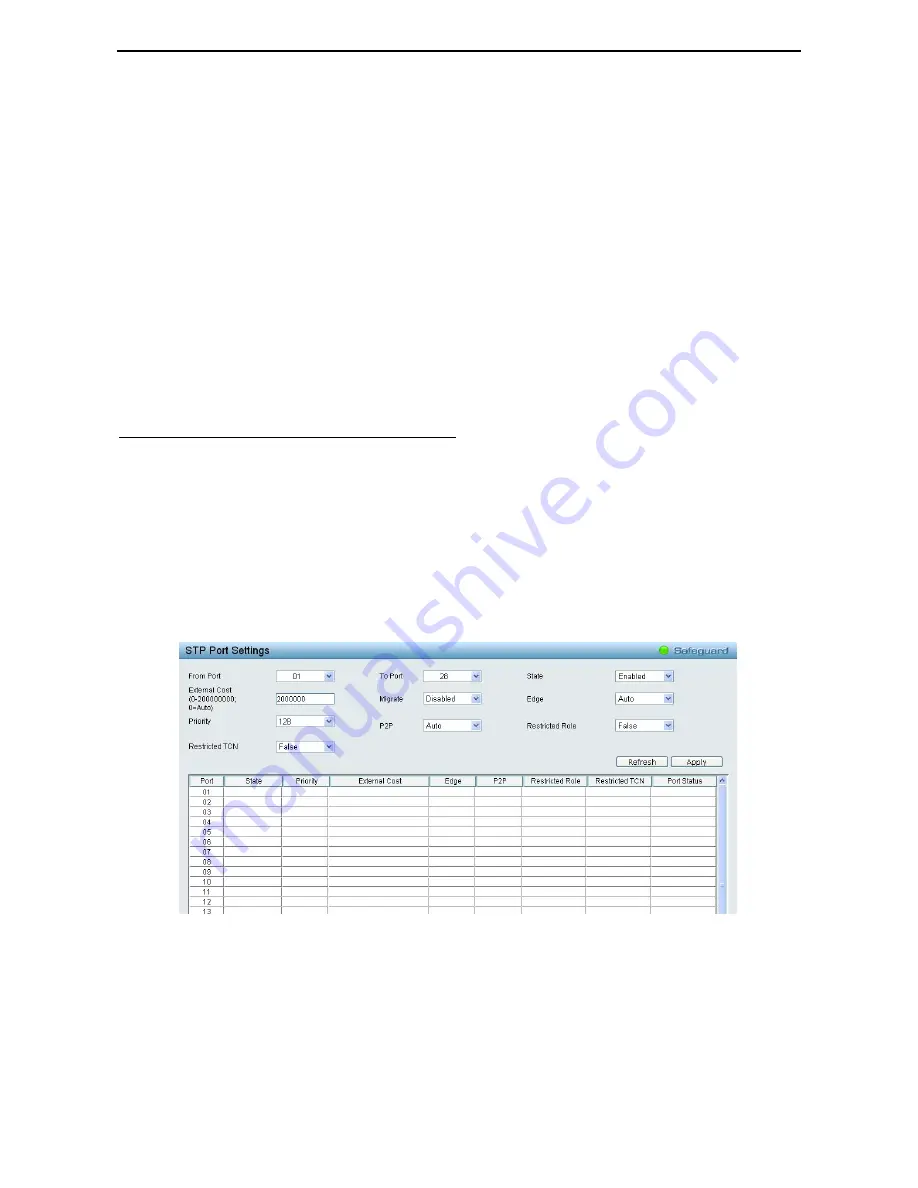
4 Configuration
D-Link Web Smart Switch User Manual
3
3
7
7
consistent with other devices on the bridged LAN. If the value ages out and a BPDU has still not been
received from the Root Bridge, the Switch will start sending its own BPDU to all other switches for permission
to become the Root Bridge. If it turns out that the Switch has the lowest Bridge Identifier, it will become the
Root Bridge. A time interval may be chosen between 6 and 40 seconds. The default value is 20. (Max Age
has to have a value bigger than Hello Time)
Hello Time (1-10 sec):
The user may set the time interval between transmissions of configuration messages
by the root device, thus stating that the Switch is still functioning. The default is 2 seconds.
Forward Delay (4-30 sec):
This sets the maximum amount of time that the root device will wait before
changing states. The default is 15 seconds.
Root Bridge:
Displays the MAC address of the Root Bridge.
Root Cost:
Display the cost of the Root Bridge.
Root Maximum Age:
Displays the Maximum Age of the Root Bridge.
Root Forward Delay:
Displays the Forward Delay of the Root Bridge.
Root port:
Displays the root port.
Click
Apply
for the settings to take effect. Click
Refresh
to renew the page.
L2 Functions > Spanning Tree > STP Port Settings
STP can be set up on a port per port basis. In addition to setting Spanning Tree parameters for use on the
switch level, the Switch allows for the configuration of the groups of ports, each port-group of which will have
its own spanning tree, and will require some of its own configuration settings.
An STP Group spanning tree works in the same way as the switch-level spanning tree, but the root bridge
concept is replaced with a root port concept. A root port is a port of the group that is elected based on port
priority and port cost, to be the connection to the network for the group. Redundant links will be blocked, just
as redundant links are blocked on the switch level.
The STP on the switch level blocks redundant links between switches (and similar network devices). The
port level STP will block redundant links within an STP Group.
It is advisable to define an STP Group to correspond to a VLAN group of ports.
Figure 4.49 – L2 Functions > Spanning Tree > STP Port Settings
From Port/To Port:
A consecutive group of ports may be configured starting with the selected port.
State:
Use the drop-down menu to enable or disable STP by per-port based. It will be selectable after the
global STP is enabled.
External Cost:
This defines a metric that indicates the relative cost of forwarding packetsto the specified
port list. Port cost can be set automatically or as a metric value. The default value is
0
(auto).
0 (auto) -
Setting 0 for the external cost will automatically set the speed for forwarding packets to the
specified port(s) in the list for optimal efficiency. Default port cost: 100Mbps port = 200000. Gigabit
port = 20000.
















































